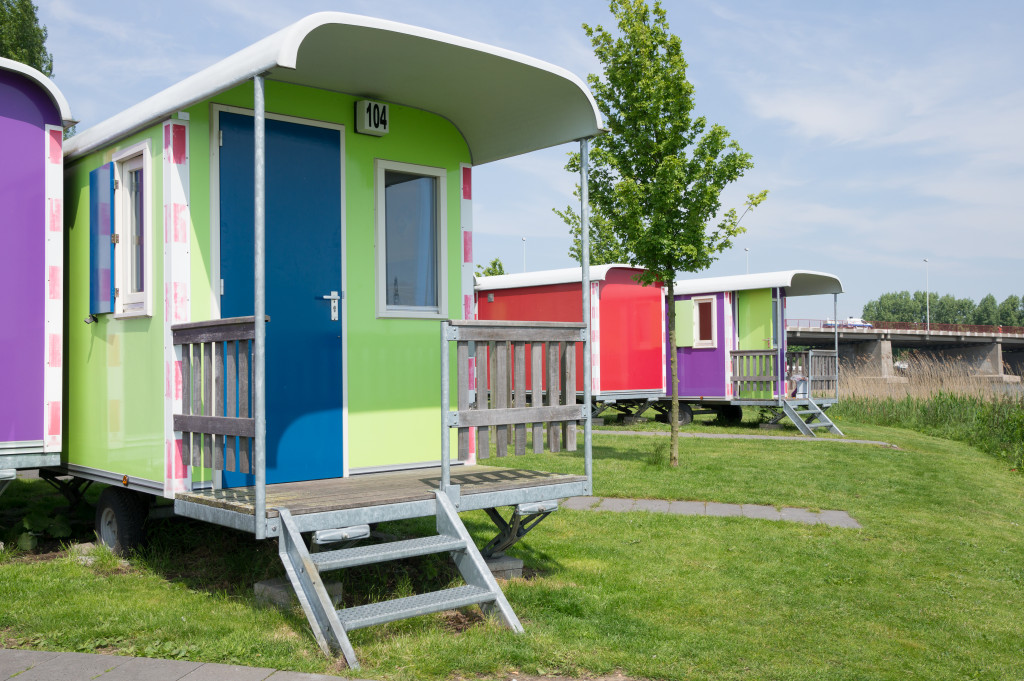Homelessness is a complex crisis that requires systemic and long-term solutions, but the public and private sectors can work hand in hand to at least meet the community’s more urgent and pressing needs. This means providing a safe—albeit temporary—shelter and giving them access to basic needs like food, clean water, and quality healthcare.
Solving the homelessness crisis will need all hands on deck and a lot of political will, but it begins with dreaming big to eradicate these problems completely. Here are some design and construction ideas for homeless people and those who need some assistance transitioning out of their present situation.
Prefabricated Tiny Homes
Prefabricated homes have been all the rage lately. Here are some of their benefits:
- The materials are generally more affordable, but the quality is still durable and excellent. Prefab homes can be built for fifty percent less than similar-sized, traditionally-built structures.
- It is so much better for the health of the environment because prefabricated homes have much less waste. And less waste also means a decrease in construction costs because waste disposal will no longer be an issue.
- Prefab homes take less time to build. One thing that people often forget about people experiencing homelessness is that their need for shelter is urgent, especially if they are in a particularly dangerous area, or during colder seasons. Prefabricated homes can be built so much faster than traditional structures. They are safer and more secure than the typical tents usually provided for people who need shelter.
- The quality control is there, so we can be sure that these structures can withstand storms and other acts of God.
If there is a vacant lot that remains unused, decision-makers can come together to make this space available for people experiencing homelessness who need help as they transition from their current situation. Portable lighting systems or towers can also light the area to ensure that the community is not grappling around in the dark.
Temporary but Comfortable Bunks
Another design idea that decision-makers can consider are temporary bunks, or sleeping pods, that are created from materials that have no need for nails, screws, or glue to stand. Partnering with architects and engineers who care about this issue can be a great way to add integrity, both literal and figurative, to these temporary shelters or pods.
They can stand in bigger areas like a gym or a basketball court and in a time when most people don’t require massive gymnasiums. These pods are built so well that they can be fitted together or stand-alone, can be properly assembled and disassembled as the need arises, and give people more security and privacy than a mere mattress on the floor.
Solar-powered Sleeping Pods

Another design idea that can help people experiencing homelessness is solar-powered sleeping pods. They are exactly as they sound; they are no larger than a portable, modular, single-unit pod, but they can be moved and assembled as necessary, and they’re comfortable and secure enough for people to sleep in. They also come in different variations, so some designs would be big enough that they can accommodate other features like a small bathroom. Still, the idea remains that they can be set beside each other and even stacked on top of one another.
The Los Angeles neighborhood Skid Row, in particular, is known for its homelessness crisis that has century-old roots. The idea for these pods came from non-profit organizations (NPO) wanting to provide a better roof over the heads of individuals experiencing homelessness. However, various zoning laws keep them from erecting more long-term solutions. In the meantime, these pods can be a safe and comfortable solution for members of the community who need a place to lay their heads for the night.
Restoring Dignity
There are plenty of NPOs already on the ground doing the hard work of lobbying for policy changes, providing immediate care to members of the community, and thinking up long-term solutions for this age-old crisis. If governments and corporations work together to make some lasting changes—changes that will keep vulnerable people off the streets and into safe, permanent homes and long-term employment—then cities may be on their way to solving this crisis for good.
All it takes is enough vision, political will, and placing marginalized communities before profit, and together, we can work towards restoring the dignity of people experiencing homelessness. We could all use a little help sometimes, and those with privilege can do so much to help center the marginalized.




